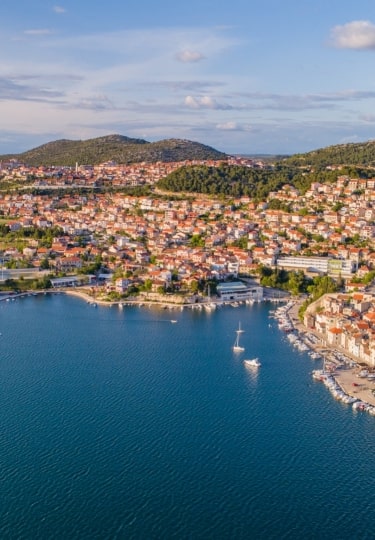What is Croatia known for? Lying at the junction of central and southeast Europe, Croatia is famed for its nature, culture, history, and gastronomy.
One of the country’s most iconic assets is Dubrovnik’s ancient walls, stretching around the Old Town’s churches, palaces, and terracotta rooftops. Croatia’s silver-screen looks extend along the Dalmatian coast to destinations including Split and Zadar, with beautiful beaches, museums, and sleepy seaside villages.
From wooded islands to breathtaking waterfalls tucked into national parks, fine wines, and fresh Mediterranean cuisine, here is a selection of the delights that make Croatia such a wonderful place to visit.
Diocletian’s Palace
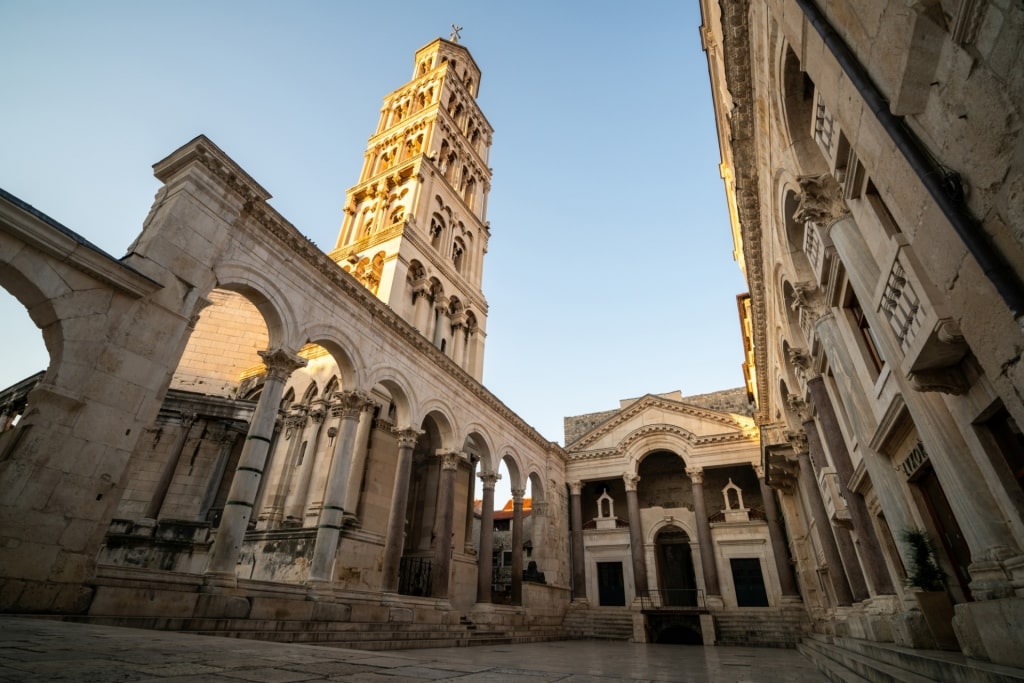
Diocletian’s Palace, Split
This fourth-century palace in Split, more of a village enveloped within a fortress, was built for the Roman emperor Diocletian using stone from the island of Brač. This UNESCO-listed Heritage Site is one of the oldest surviving palaces of its size in Croatia.
The complex housed the emperor’s extravagant villa and summer house, a Roman military camp, administrative buildings, and servants’ quarters, with four watchtowers, one at each corner of the palace.
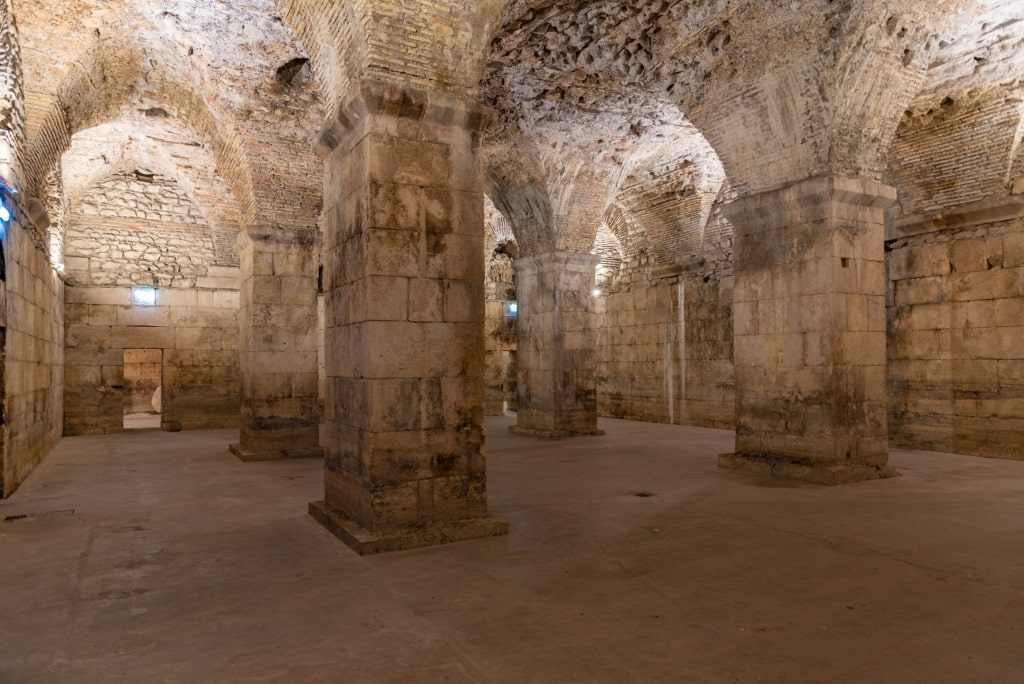
Diocletian’s Palace, Split
Below the emperor’s private apartments lies the Cellars of Diocletian’s Palace, a cavernous network of ancient halls with vaulted ceilings. Today, these atmospheric cellars are often used to host exhibitions, plays, and other cultural events.
Pop into the seventh-century St. Domnius Cathedral, also located in Split’s Old Town. The church is centered on the tomb of Diocletian. Gaze at the decorative frescoes, including depictions of Diocletian, his wife Prisca, and the second patron saint of Split, Anastasius of Aquileia.
The cathedral’s bell tower rises 187 feet. Originally added in the 13th century, it was reconstructed around the turn of the 20th century. If you’re feeling energetic, climb to the top for spectacular views of Split.
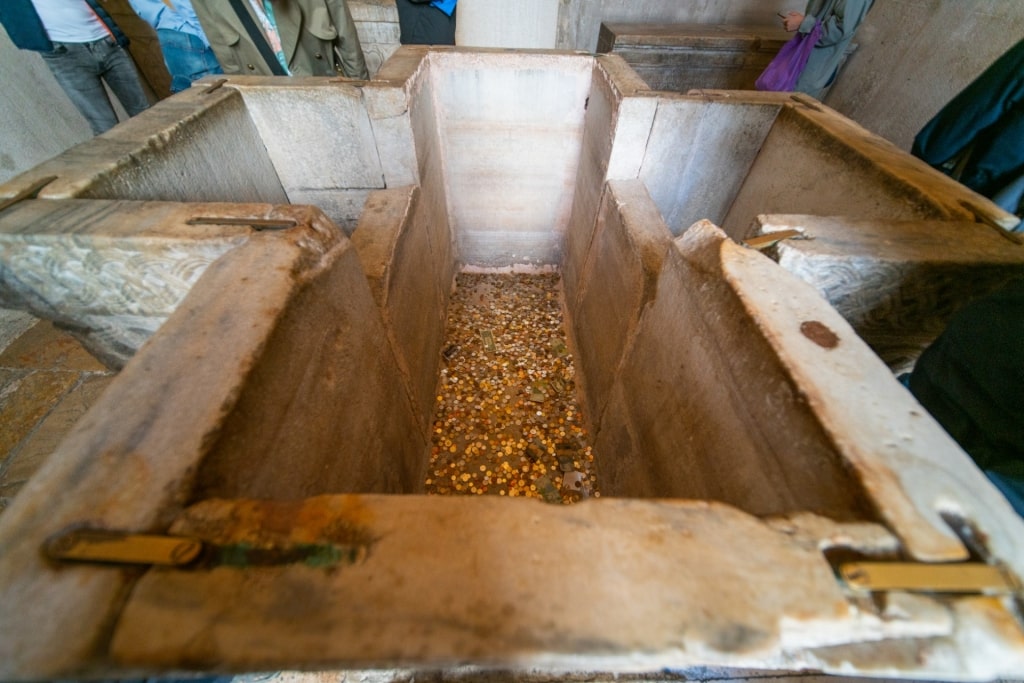
Temple of Jupiter, Split
One of the best things to do in Split is to follow the narrow lanes from the cathedral to the Temple of Jupiter, dedicated to the Ancient Roman god. Arriving at the temple’s emerald-green doors, notice the black granite sphinx by the entrance. It was among 12 brought from Egypt by Emperor Diocletian.
Krka National Park
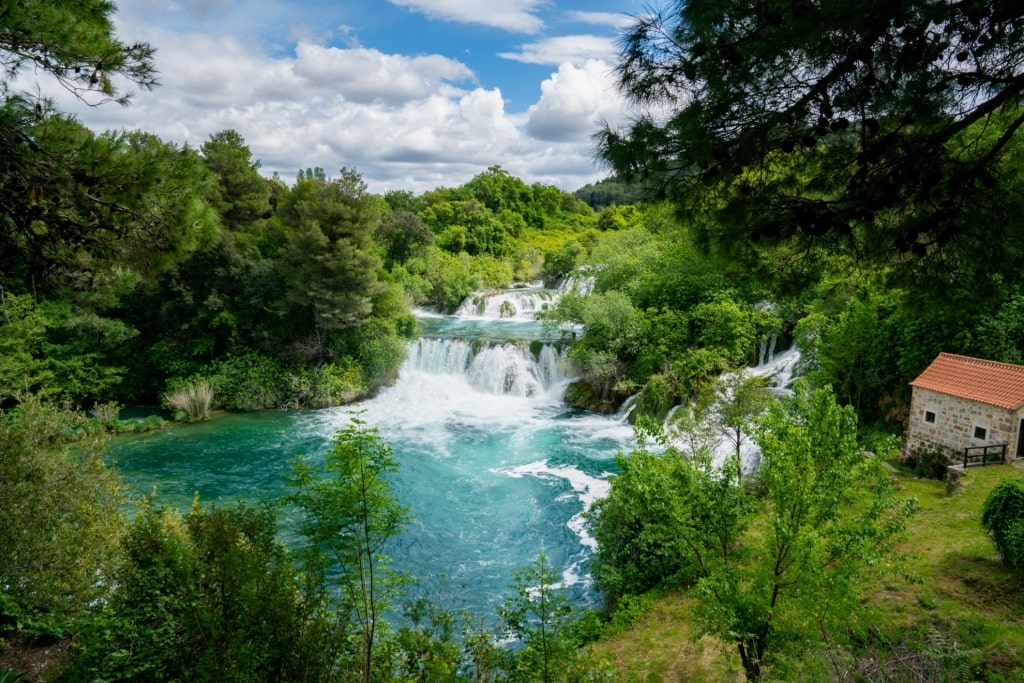
Krka National Park
Located inland between Zadar and Split, Krka National Park takes its name from the 45-mile Krka River that flows through it. Green-carpeted canyons, shimmering lakes, wild meadows, and some of Croatia’s best waterfalls fill this extraordinary wilderness.
Enter the park from the Lozovac entrance and make your way to Skradinski Buk, the final—and longest—tufa barrier on the Krka River, where the water tumbles over tiers and steps.
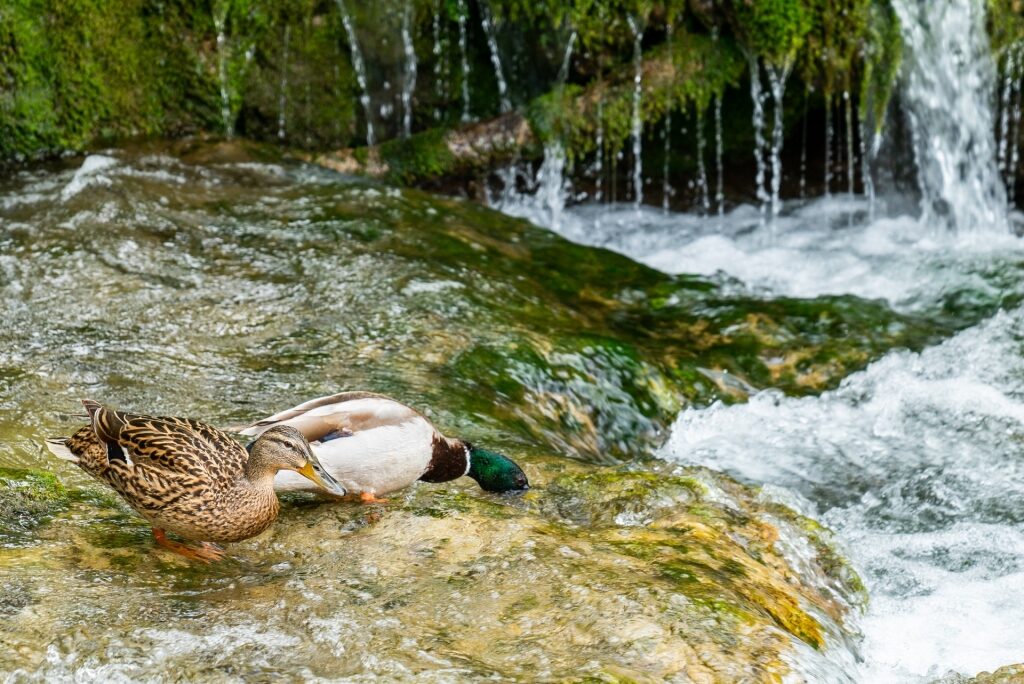
Krka National Park
While visitors are not permitted to swim here, there’s plenty of wildlife and nature to take in around the waterfall if you follow the one-mile circular trail, stopping at the restored former watermills.
Reptiles including the Dalmatian wall lizard and the Balkan green lizard are among the wildlife to look out for. Hundreds of bird species, including nesting black-headed bunting, the eastern subalpine warbler, and cirl bunting, plus otters, bats, wolves, and wildcats also inhabit the park.
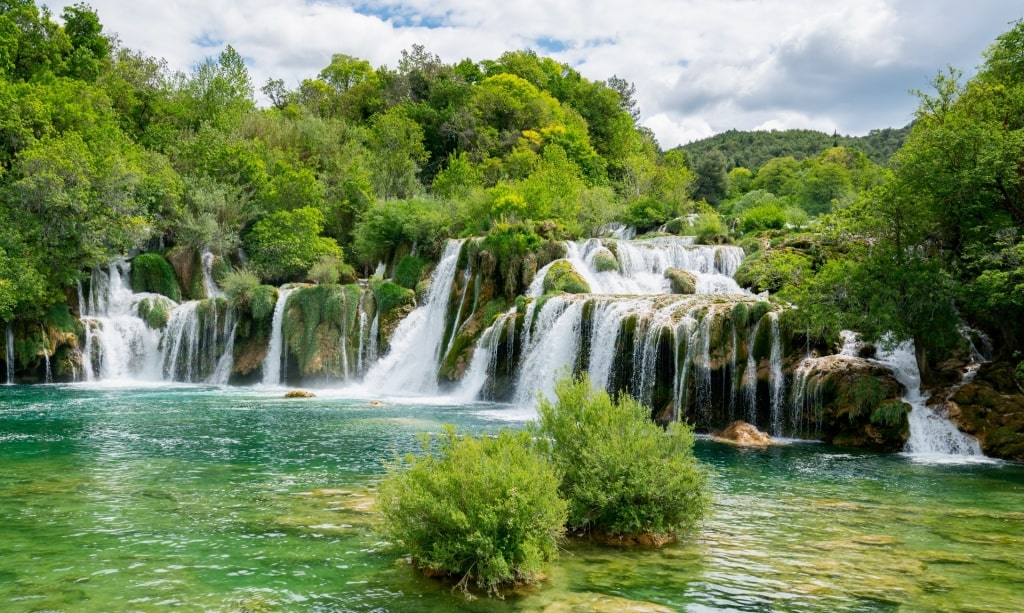
Skradinski Buk, Krka National Park
Hop on a boat ride from Skradinski buk. It’s the best way of getting around Krka and offers the chance to visit the tiny island of Visovac, home of a 15th-century Franciscan Monastery shrouded in towering cypresses.
Gorgeous Beaches
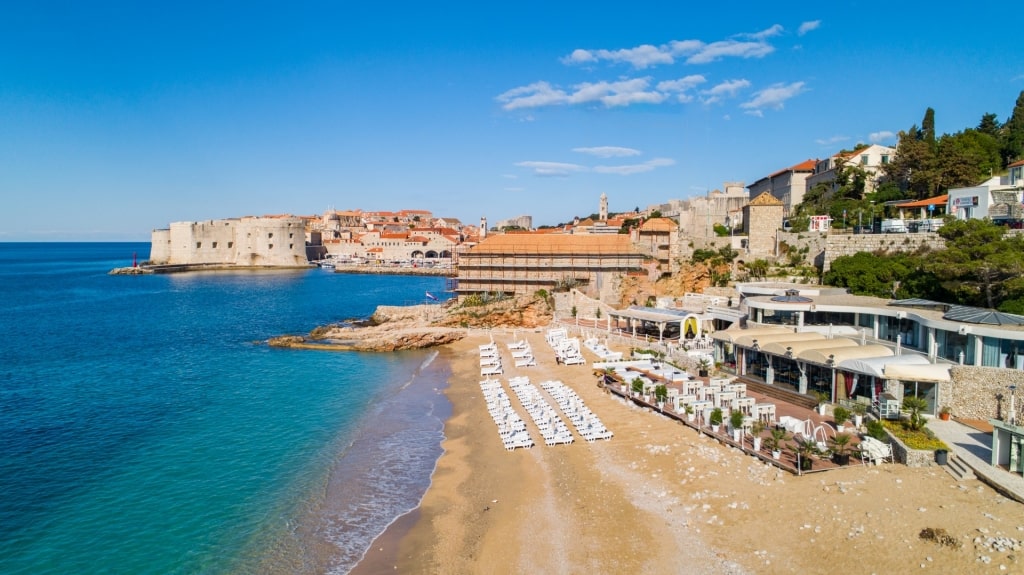
Banje Beach, Dubrovnik
Croatia is known for its beaches, with close to 2,500 miles of coastline between its islands and the mainland.
Croatia’s major coastal cities, including Split and Dubrovnik, are within easy reach of some top beaches, such as Split’s city beach, Bačvice. The shore here is shallow, gently warmed by the sun, and perfect for paddling.
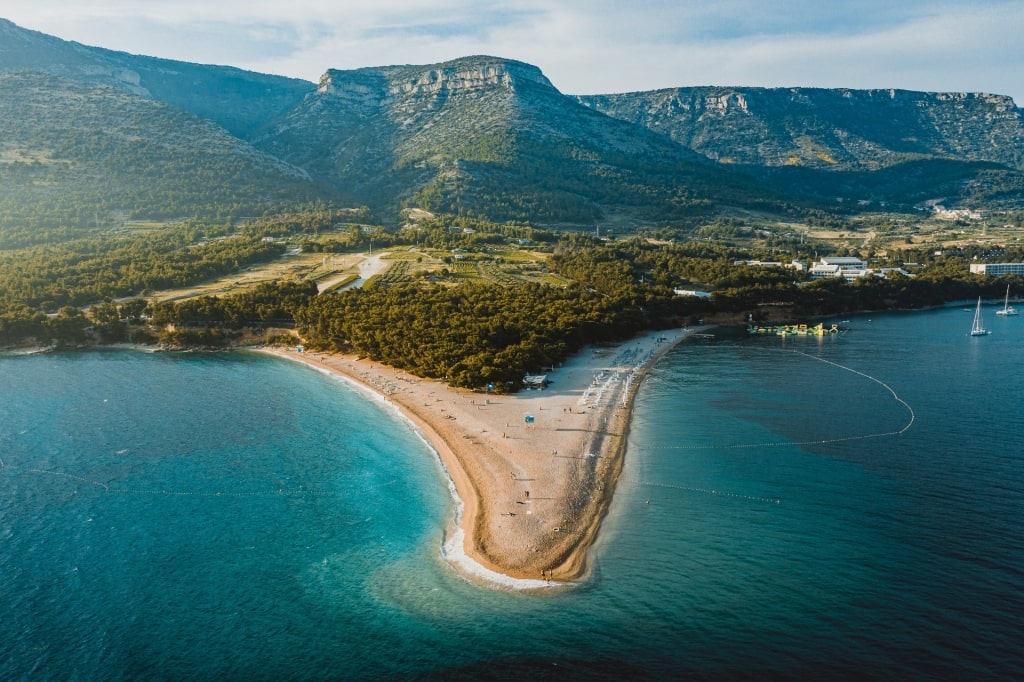
Zlatni Rat, Brač
One of the best beaches in Croatia is on Brač—the largest island in central Dalmatia—facing Split. Hop on a 50-minute ferry ride to reach the island and make your way to Zlatni Rat, or Golden Cape, on the south shore.
This famous beach is a triangular spit of gleaming white pebbles and gin-clear water. It’s a popular spot for windsurfing and swimming, while a swath of pine trees on the beach gently scents the air.
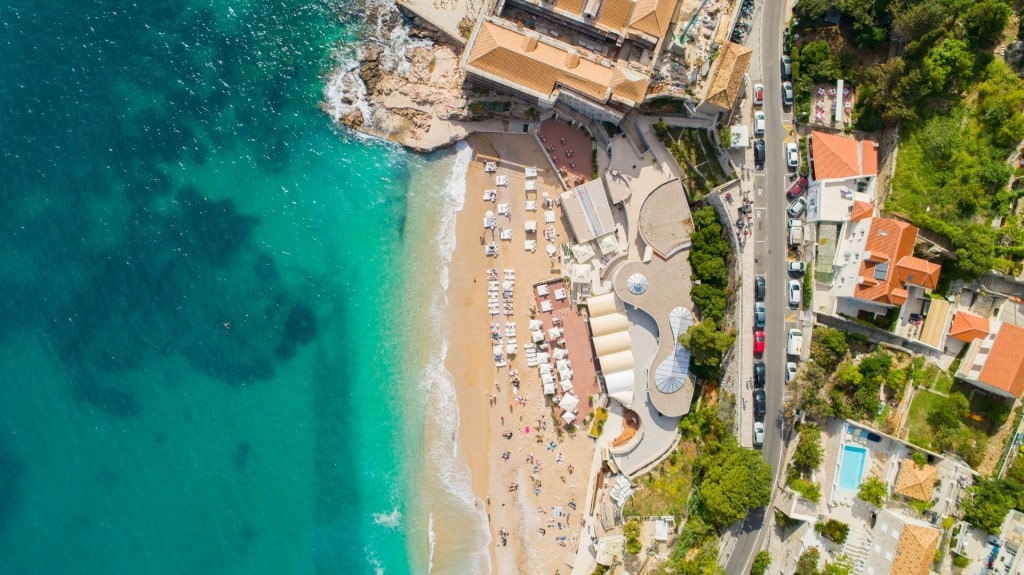
Banje Beach, Dubrovnik
Within sight of Dubrovnik’s famous fortified walls, Banje is another popular pebble beach with sunbeds, parasols, and sublime views of Lokrum Island. Kayaking and waterskiing are popular activities here.

Plaža Sveti Jakov, Dubrovnik
For a more hidden beach in Dubrovnik, continue a short distance south to Plaža Sveti Jakov. This blissful sun-tinged spot is framed by tall cypress trees and other Mediterranean flora with a beach bar for refreshments.
Lokrum Island
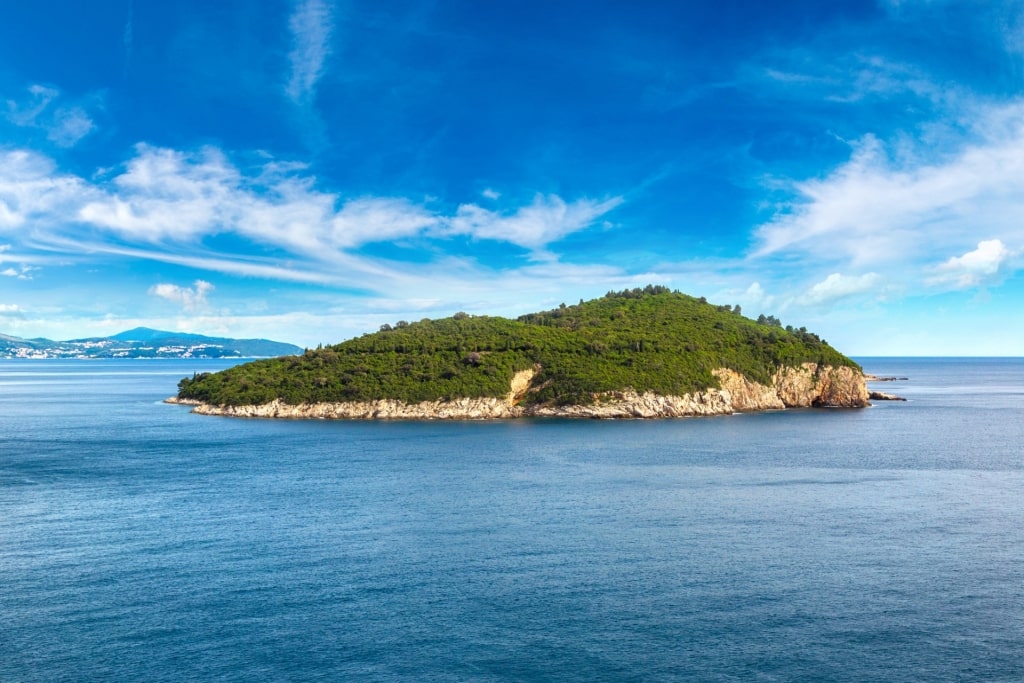
Lokrum Island
Lokrum is a tranquil forest-covered island that rises from the glittering water across from the medieval city of Dubrovnik.
A quick 15-minute ferry journey from the Old Town makes it easy to reach Lokrum. What greets travelers is an island laced with olive groves, holm oak forests, and cypress trees.
Visit the island’s Botanical Garden to see some of the 800 plant species such as palm trees, cacti, eucalyptuses, and black pines.
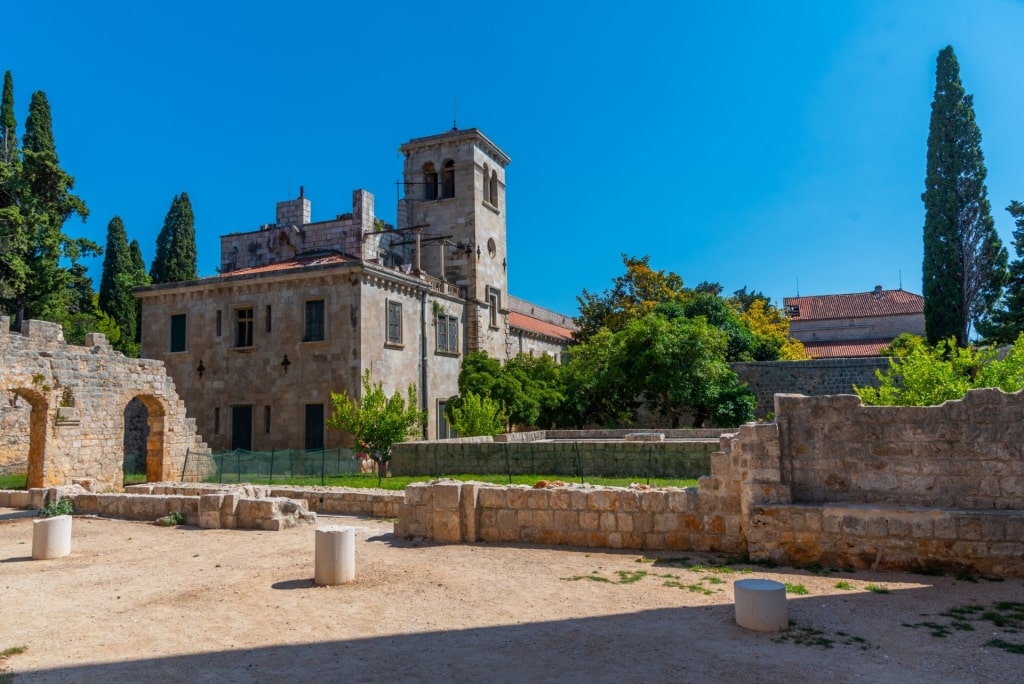
Benedictine Monastery of St. Mary, Lokrum Island
Lokrum’s 11th-century Benedictine Monastery of St. Mary is just a one-minute walk from the Botanical Garden. Benedictine monks settled on the island around 915 A.D., with the monastery built in the years that followed.
Stroll among the monastery complex, including the remains of the basilica, added in the 12th and 13th centuries, the leafy cloister garden, added in the 15th and 16th centuries, and the sublime Giardini di Massimiliano, added in the 19th century.
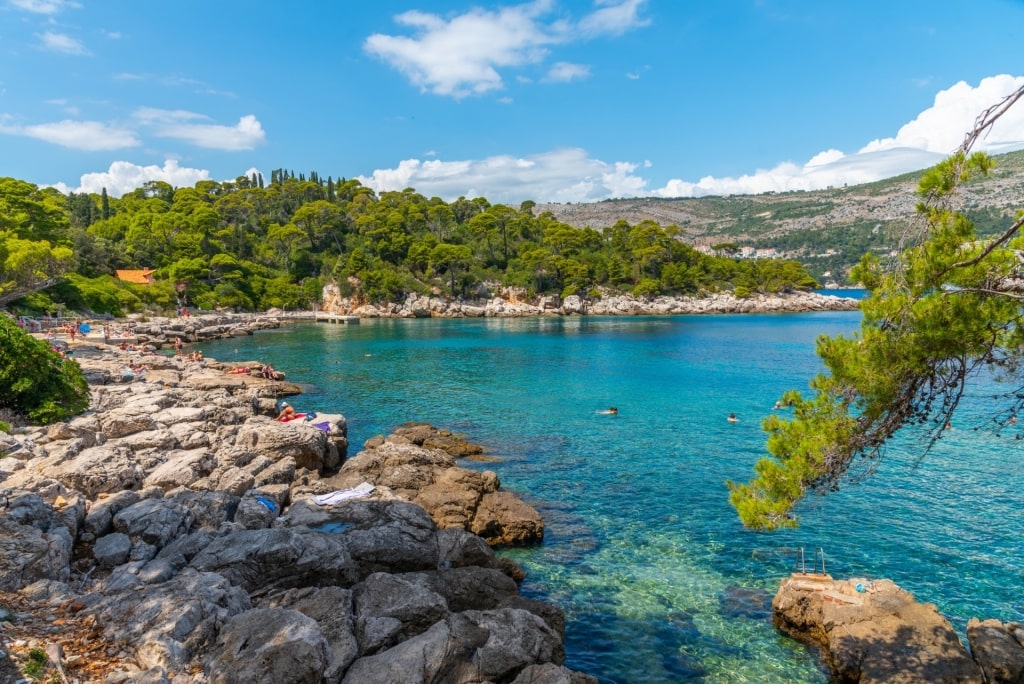
Lokrum Island
To immerse yourself in the tiny island’s wild side, wander among the heavenly scented trails, lined with prickly juniper, rosemary, black locust, heather, and rockroses.
You could enjoy a swim in the tranquil Dead Sea, a small saltwater lake on the southern part of the island. There’s an outdoor bar here where you can sit in the shade of tall trees and sip on a local beer or soda before returning to the mainland.
Delicious Wines
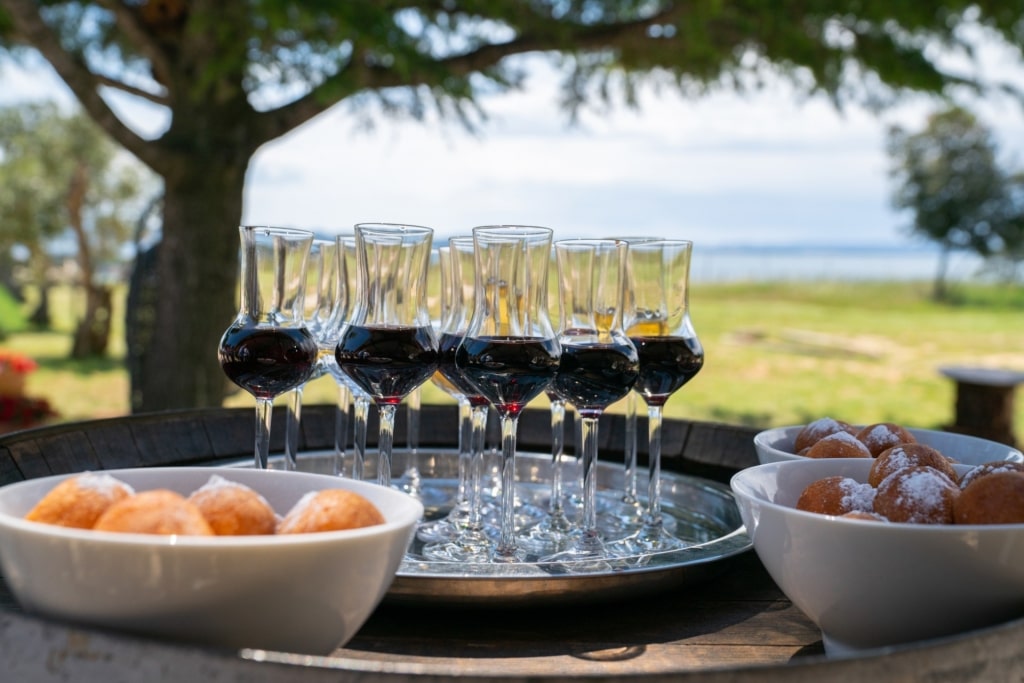
Wines
Few of Croatia’s wines are exported, making them a delicious discovery for traveling oenophiles.
The sun-drenched Dalmatian coast, including the Pelješac Peninsula just north of Dubrovnik, is famous for its robust Plavac Mali red wines. Fans of easy-drinking white wines will enjoy Croatia’s Maraština, which pairs well with salads, seafood, cheese, and white meats.
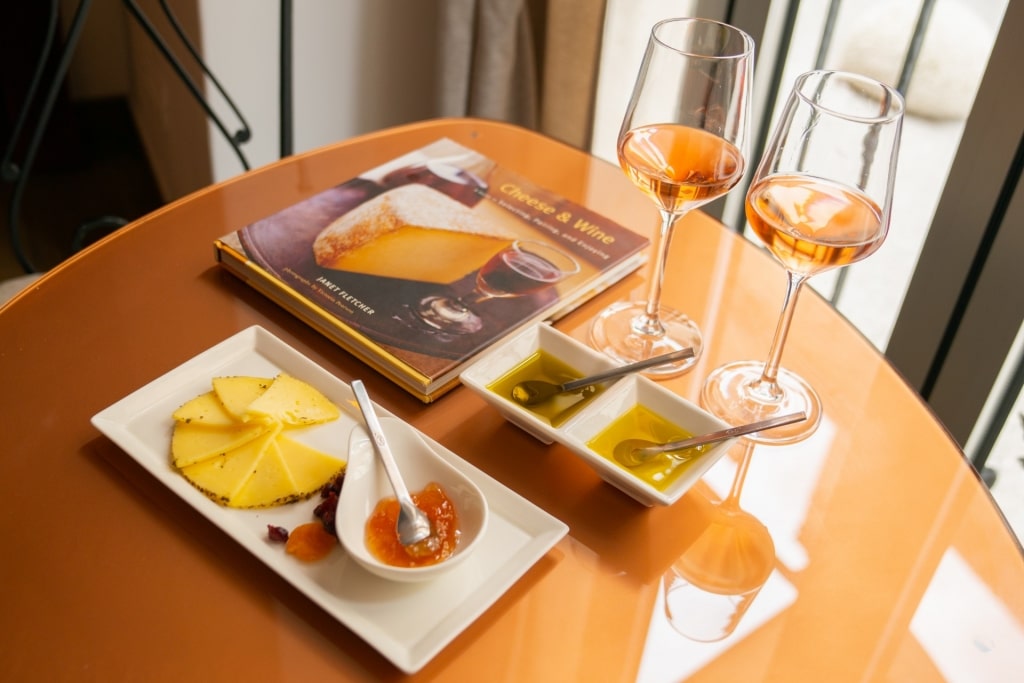
Wine tasting in Croatia
Pop into a wine bar in Zadar, Split or Dubrovnik and you’ll likely encounter a selection of delicious local wines.
The charming D’vino wine bar in Dubrovnik’s Old Town offers tastings and wines by the glass from the region, while Zadar’s Degarra Winery produces a deliciously creamy Maraština, along with a variety of other white, red, and rosé libations.
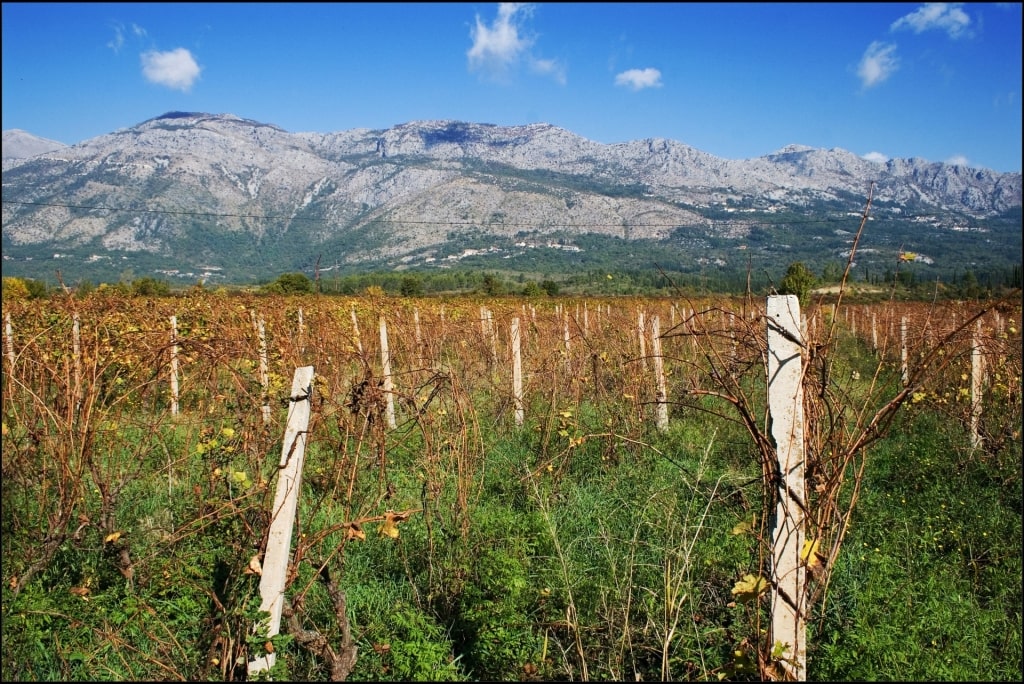
Konavle Valley
In the Konavle Valley, deep in Croatia’s wine country, a string of wineries are open for vineyard tours and tastings. Slip into the verdant rows of vines at the Brajkovic estate in the village of Zastolje. Sample the winery’s dry white Dubrovacka Malvasija and Plavac Mali on a tour of the centuries-old wine cellars.
Winery Botaro is another family-run vineyard to discover. Take a seat at a gingham-draped table on the sun-dappled terrace as you learn about the 600-year-old estate’s grapes.
Sip on the four types of wine—Cabernet Sauvignon, Zinfandel Rosé, Zinfandel, and Chardonnay—served with platters of meat, cheese, and homemade bread.
Read: The Ultimate Croatian Food Guide
Paklenica National Park
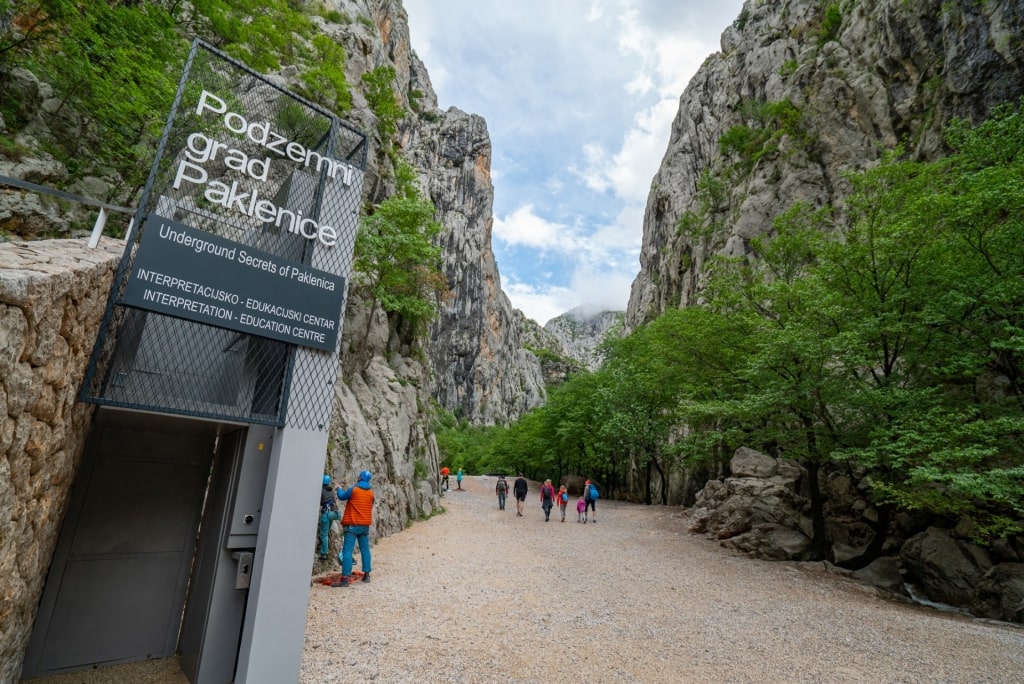
Paklenica National Park
One of the most beautiful places in Croatia, Paklenica is defined by its serrated, emerald canyons covered in beech and pine forests. There are unique rock formations, gray limestone mountains, dramatic caves, and a wealth of wildlife, too.
The park’s larger canyon is Velika Paklenica (big Paklenica) at nine miles long, while Mala Paklenica (small Paklenica) runs almost 7.5 miles.

Butterfly
Among the park’s wildlife are a number of bat species, bears, lynx, wild cats, eagles, falcons, and deer. Look closer and you might also spot some of the park’s more than 100 species of diurnal butterflies.
If you’re a bird lover, it’s worth checking out the exhibition on the region’s endangered birds of prey at the entrance to Mala Paklenica.
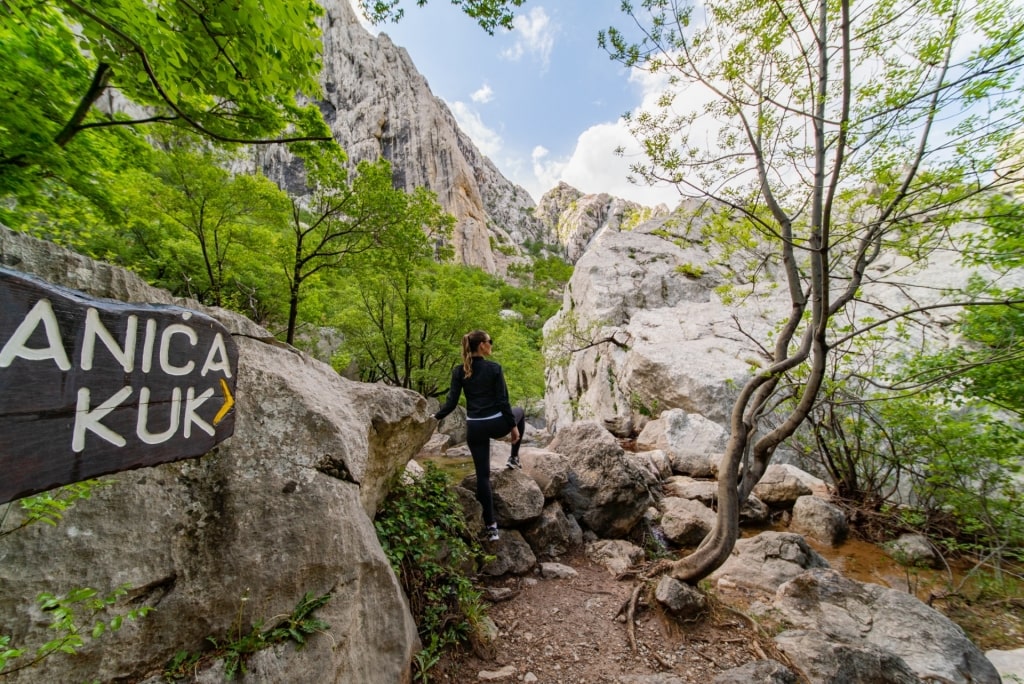
Paklenica National Park
With around 124 miles of trails woven into the landscape, hiking is the best way of getting to know Paklenica National Park.
You could also don a headlamp to try guided spelunking, or caving, in Modric Cave in Rovanjska or Manita peć, deeper into the park, to witness breathtaking stalagmites and stalactites.
Charming Cavtat
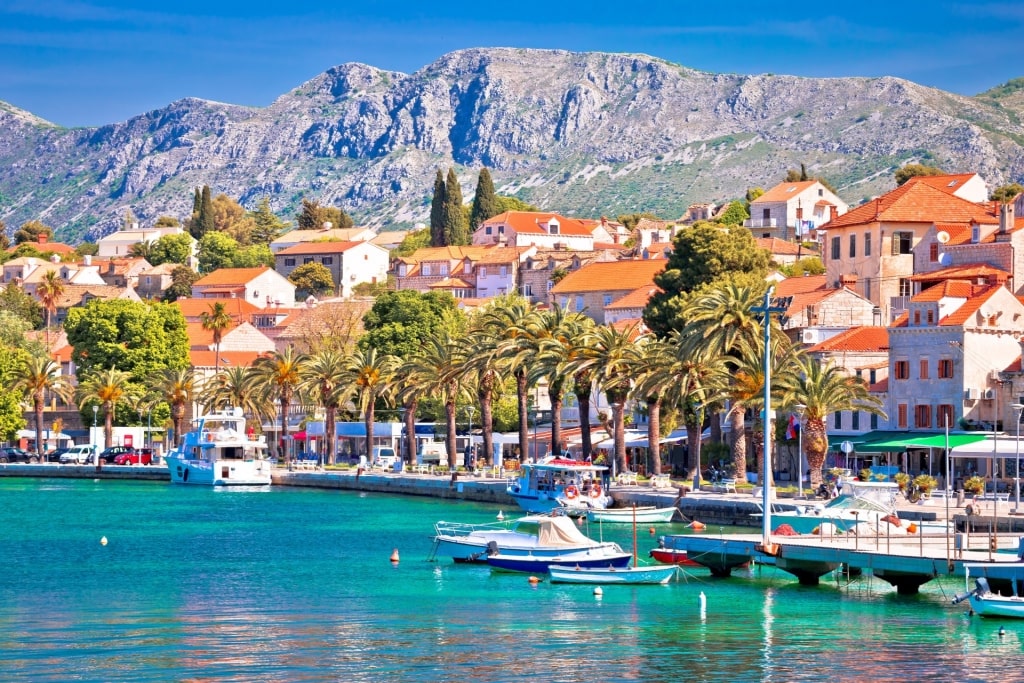
Cavtat
Enjoy the slow pace of life in Cavtat, a seaside village that juts out into the Adriatic, close to the borders of Bosnia and Herzegovina and Montenegro, in southern Croatia.
Cavtat is a relaxed spot with beaches, restaurants, and a pretty, palm and cypress-lined harbor.
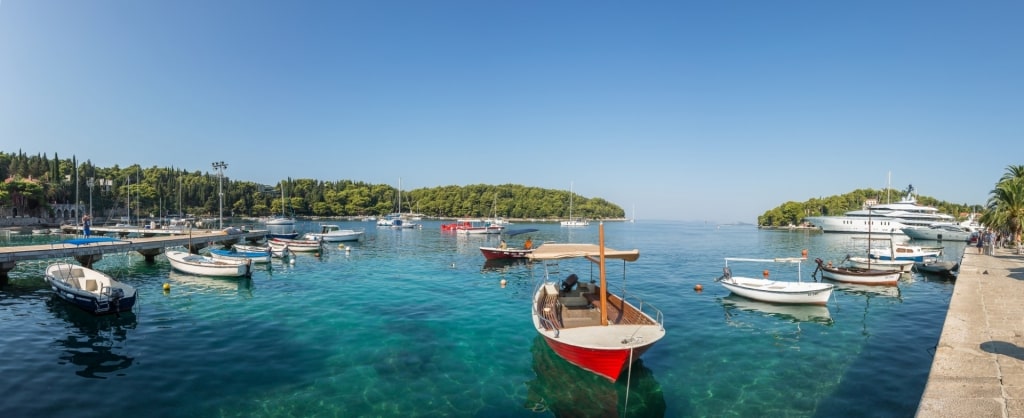
Cavtat
Follow the coastal path around Cavtat’s peninsula. Stop at the Račić family Mausoleum, created by famed Croatian sculptor Ivan Meštrović, within St. Rocco Cemetery. Close by is the Our Lady of Snow Franciscan Monastery that’s home to a collection of early Renaissance paintings.
Delve into Bukovac House, a small museum set within an unassuming building. It’s the birthplace and former studio of artist Vlaho Bukovac, the founder of modern Croatian art. The museum showcases plenty of the artist’s captivating portraits.
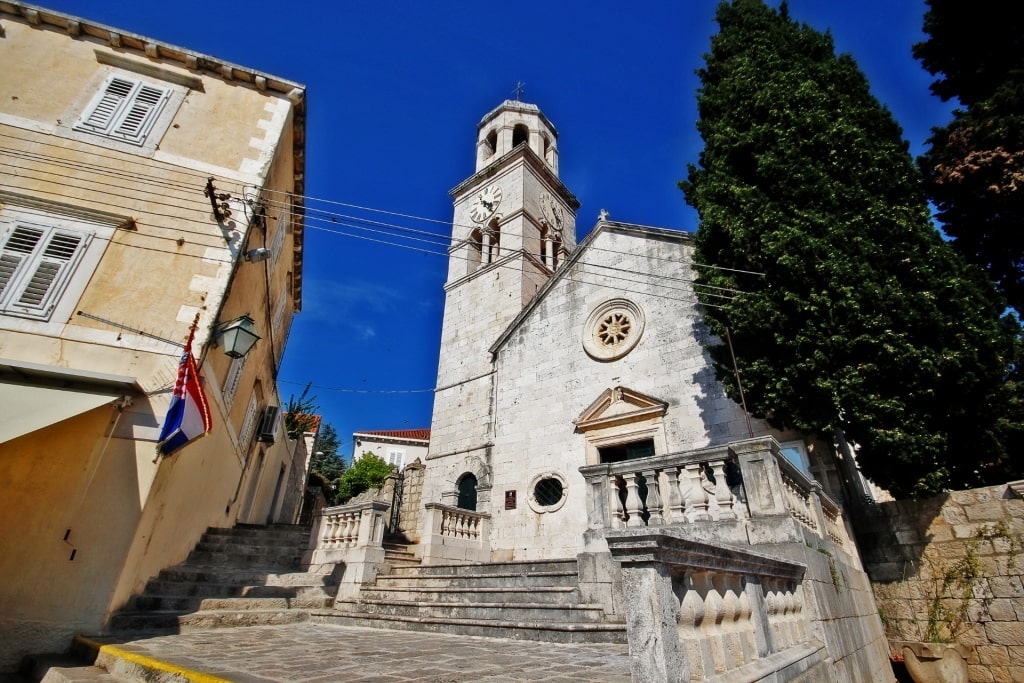
St. Nicholas Church, Cavtat
Wander inside the 15th-century St. Nicholas Church where more Bukovac paintings are hung. A few doors down is the charming Shell Museum with its collection of over 3,500 pretty seashells.
Stop for lunch at a harborside restaurant once you’ve walked Cavtat’s pretty streets. Briny-fresh oysters, eggplant stew, and lamb pašticada, a slow-cooked traditional lamb dish, are typical, complemented with delicious local wines.
Masterful Churches
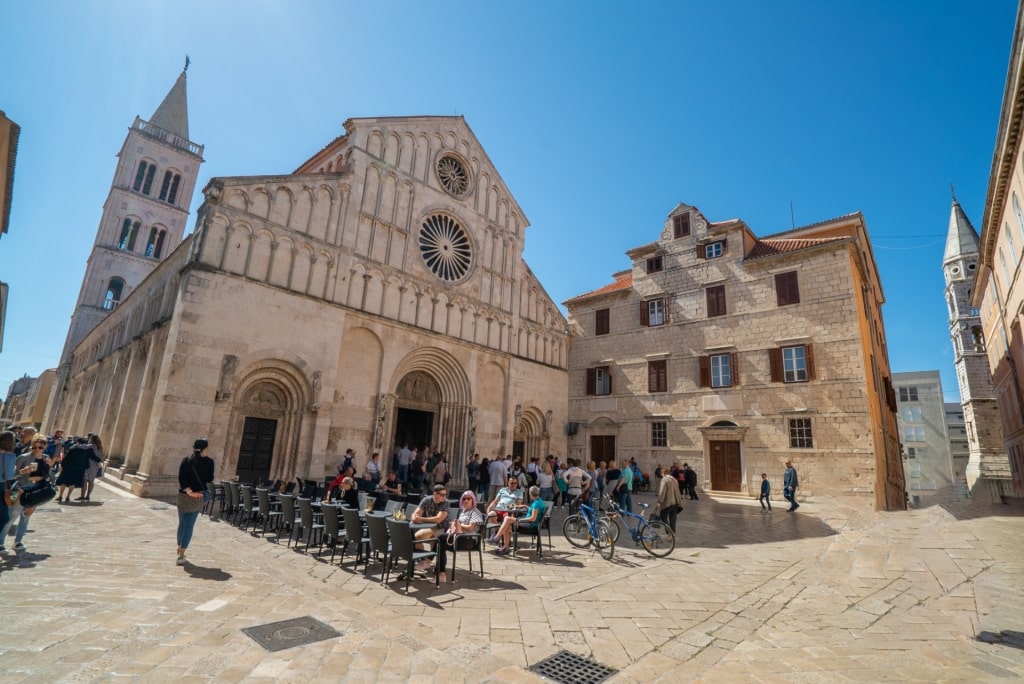
Cathedral of St. Anastasia, Zadar
Croatia is home to utterly beguiling churches, with these centuries-old time capsules found in the countryside, on the coast, in cities, and on the islands.
The largest church in the entire Dalmatia region is Zadar Cathedral, or the Cathedral of St. Anastasia. While most of the existing three-nave cathedral was built in the 12th century, the church’s origins are in the fourth and fifth centuries, when a Christian basilica was first built.
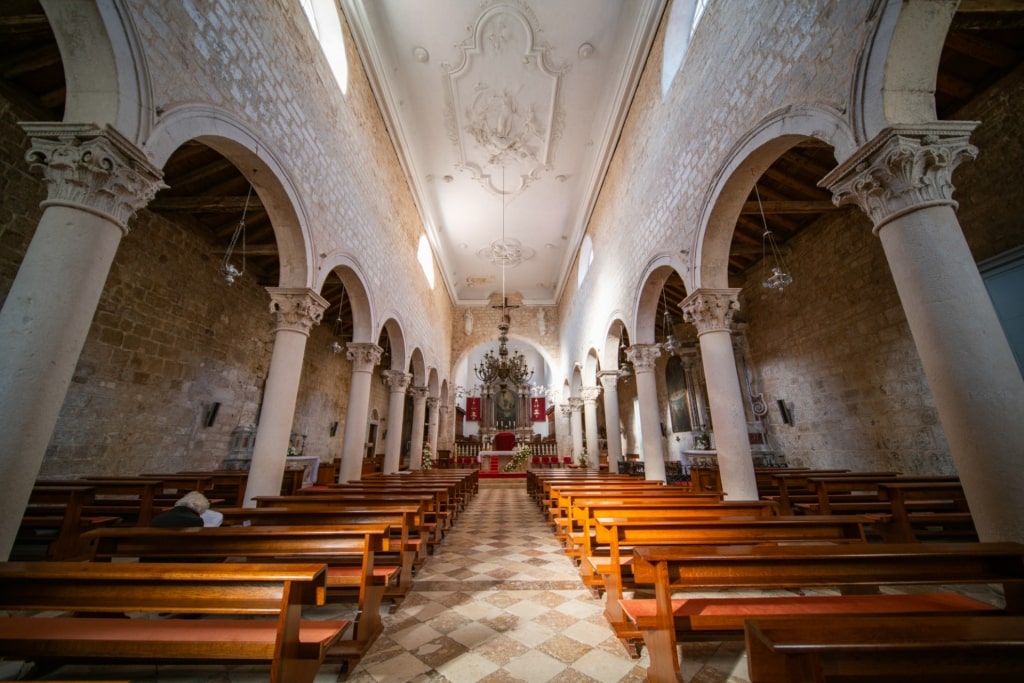
Cathedral of St. Anastasia, Zadar
This beautiful, biscuit-colored church features a Romanesque-style rose window on the front facade with the remains of frescoes inside.
Though the cathedral was damaged during World War II, it has since been repaired. Peek inside to view the remarkable marble sarcophagus of St. Anastasia.
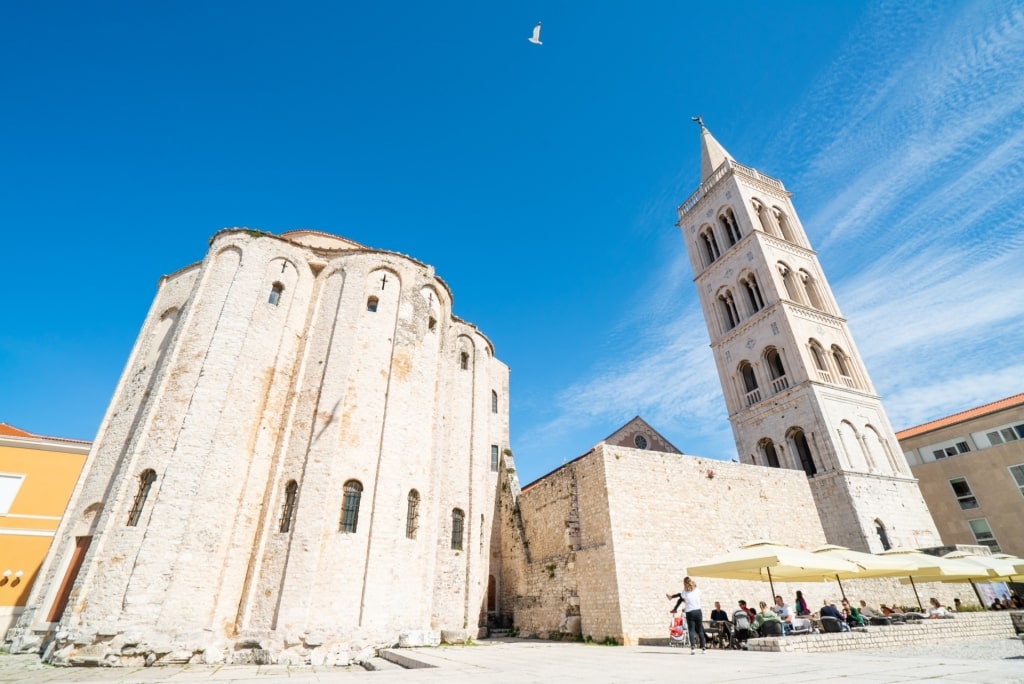
Church of St. Donatus, Zadar
Zadar’s Benedictine Monastery of St. Marija and Church of St. Donatus are spectacular, too. St. Donatus especially is known for its grand Byzantine-style circular structure dating from the ninth century, housing two complete Roman columns.

Cathedral of St. James, Šibenik
The Renaissance and Gothic Cathedral of St. James in Šibenik is a UNESCO-listed masterpiece. The church was completed in 1535, taking 104 years to finish. Witness the domed and vaulted ceilings, stained-glass windows, and sculptured faces of men, women, and children on the exterior.
Meanwhile, visiting the Old Town is one of the best things to do in Dubrovnik, as it is home to many characterful churches that can be visited in one day, including the early 18th-century Dubrovnik Cathedral.
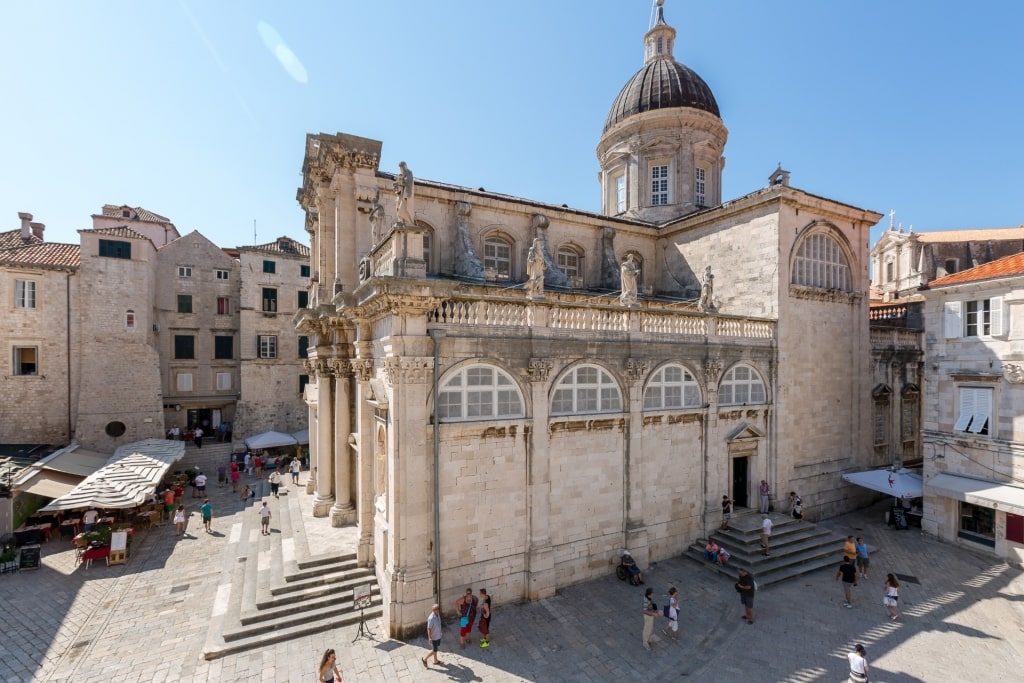
Cathedral of the Assumption of the Virgin Mary, Dubrovnik
Officially the Cathedral of the Assumption of the Virgin Mary, this Baroque church was built on the site of much older cathedrals and features a sky-piercing domed roof.
Perhaps the most striking, though, is the Baroque Church of St. Blaise, located at the end of an elegant shopping street. The church was built in 1715, also on the site of a former church, to honor St. Blaise, the patron saint of the city.
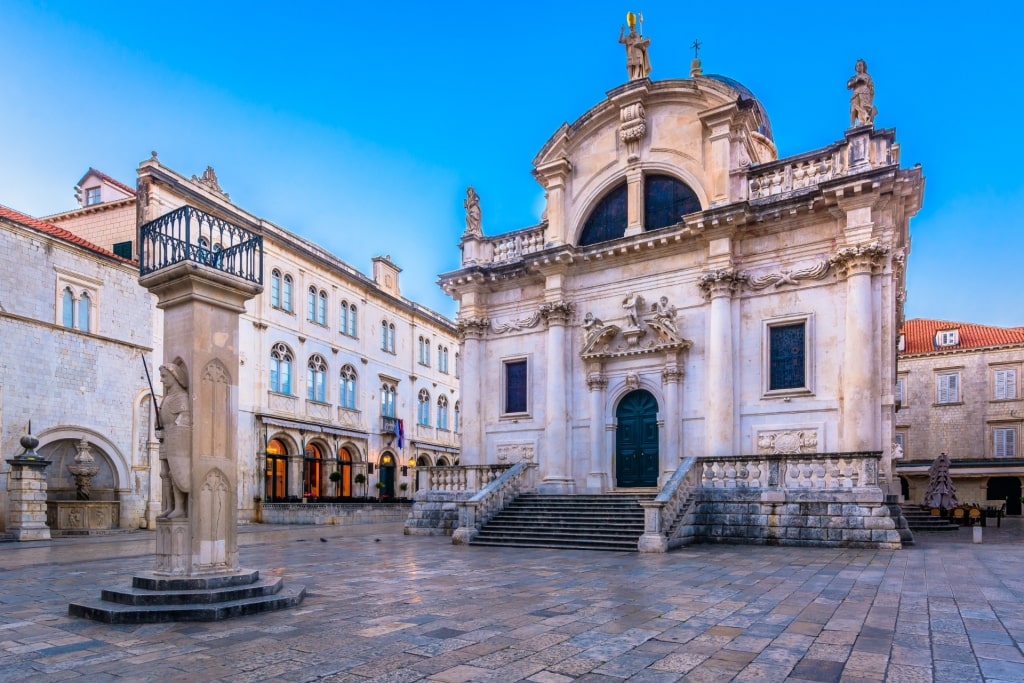
St. Blaise, Dubrovnik
Walk up the stone steps and beneath the stone statues above the doorway to see the 15th-century statue of St. Blaise holding a model of ancient Dubrovnik inside the church.
Dubrovnik Old Town
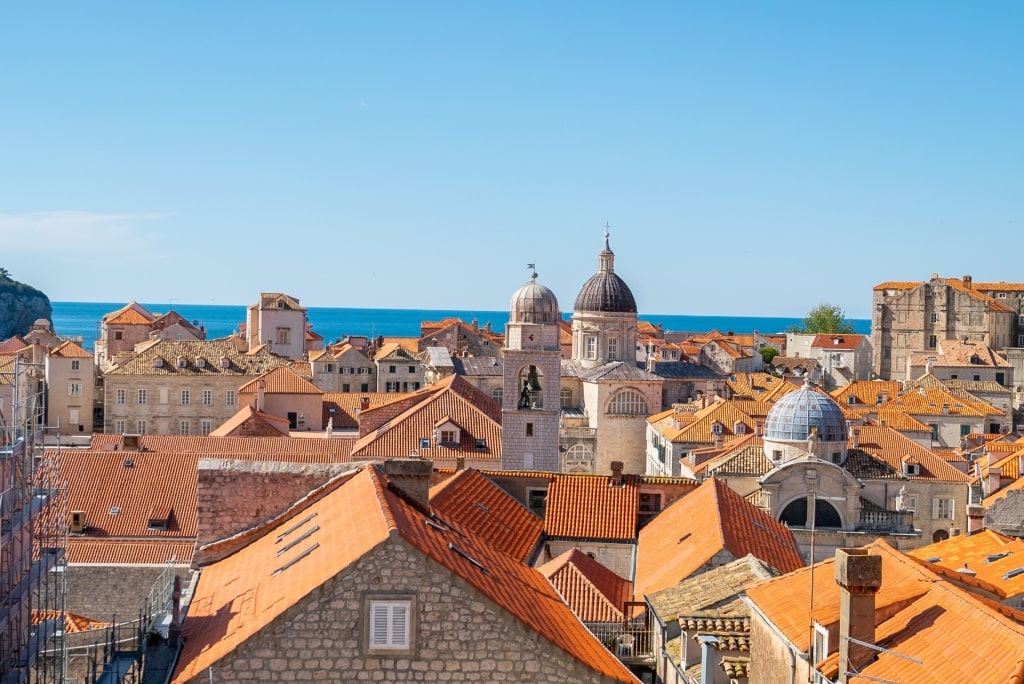
Dubrovnik Old Town
What is Croatia famous for? The answer for many is, arguably, Dubrovnik Old Town.
Enveloped within 1.2 miles of fortified walls, constructed at various periods between the 13th and 17th centuries, Dubrovnik’s Old Town is crammed with churches, palaces, museums, galleries, shops, restaurants, and bars.
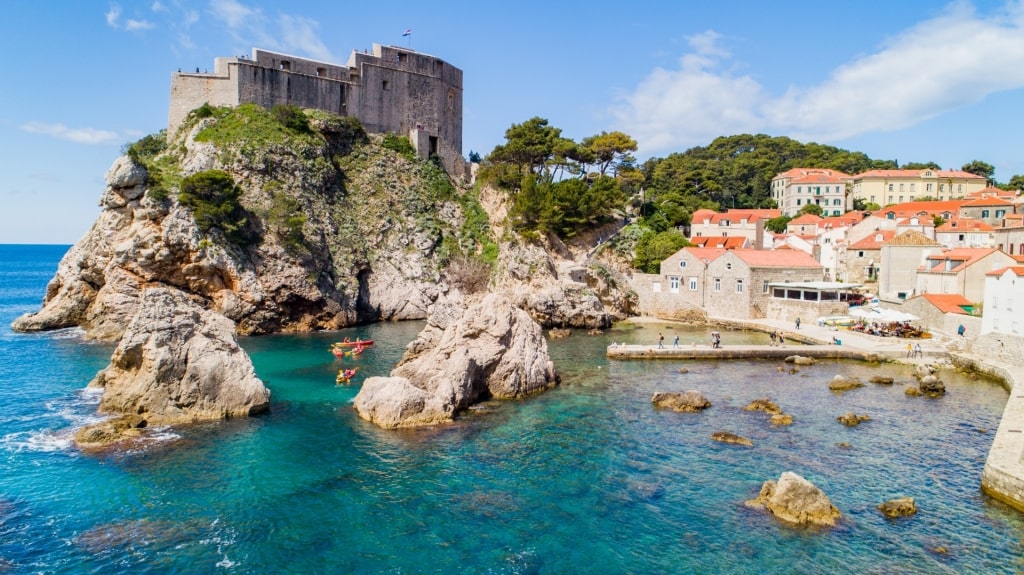
Fort Lovrijenac, Dubrovnik Old Town
The Walls of Dubrovnik are punctuated with six fortresses. If you’re a first-time visitor to Dubrovnik, you might want to walk the walls before wandering the cobbled streets to admire the jumble of medieval, Renaissance, Gothic, and Baroque architecture inside.
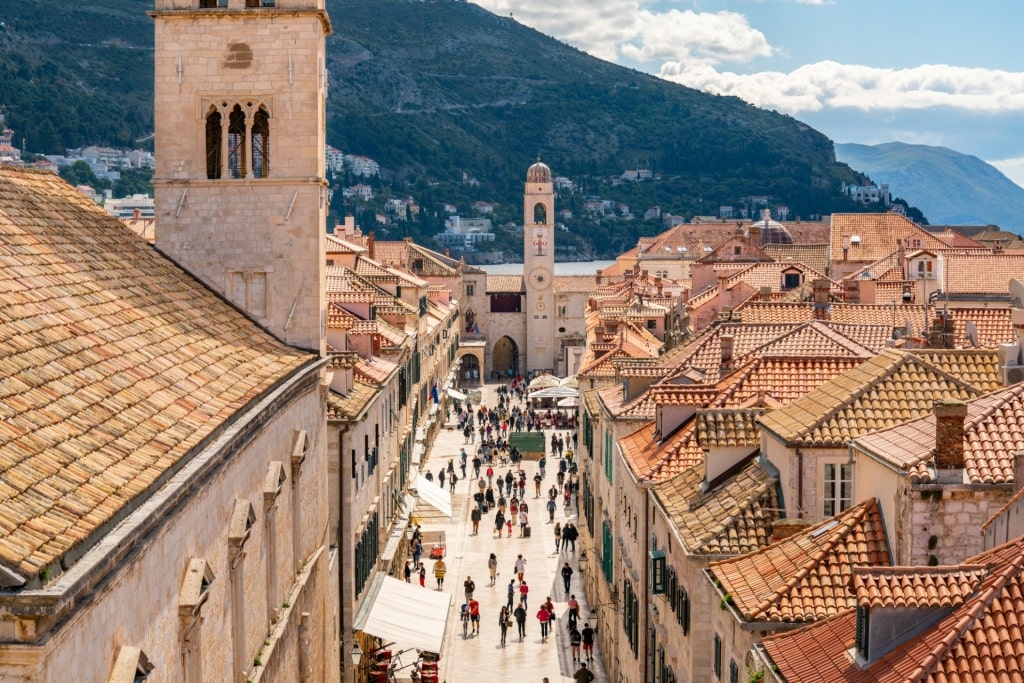
Stradun, Dubrovnik Old Town
Enter the Old Town from the main entrance, known as Pile Gate, leading to Stradun, the old quarter’s main pedestrian thoroughfare. You’ll instantly be met with the tiny 16th-century Church of St. Salvation, the elaborate 15th-century domed Onofrio’s Fountain, and the Franciscan Monastery.
Lose yourself in the early 13th-century monastery, with its Romanesque-Gothic cloister and fascinating relics inside the Old Pharmacy Museum, with its vast apothecary collection.
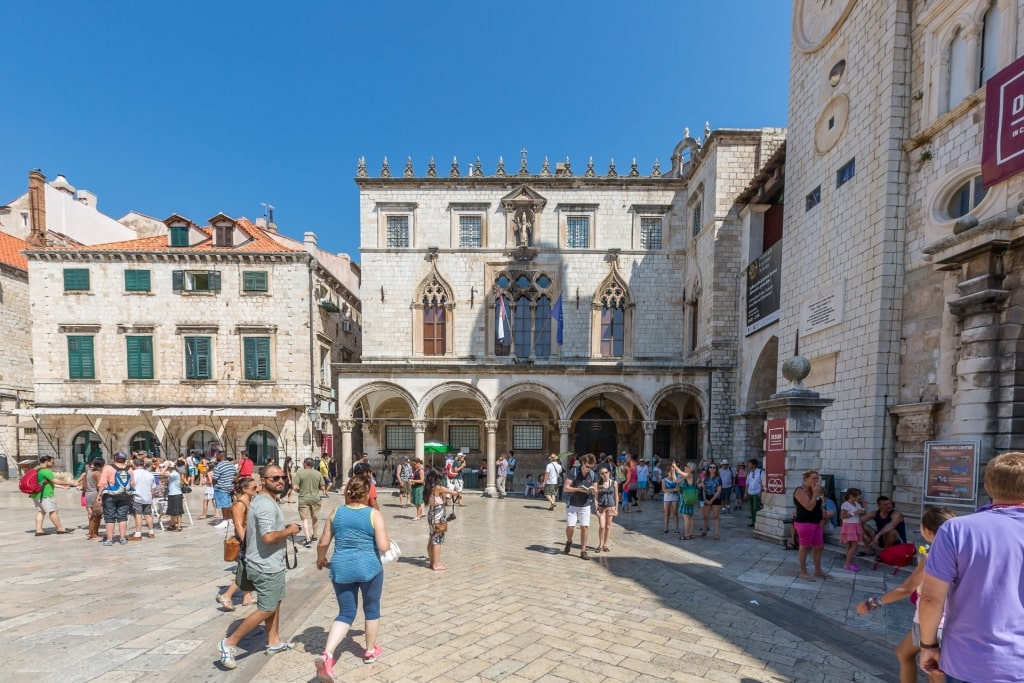
Sponza Palace, Dubrovnik Old Town
Continue all the way down Stradun to Sponza Palace, a graceful and well-preserved early 16th-century palace that’s served as state offices, the customs office, the mint, a bank, the treasury, and the armory.
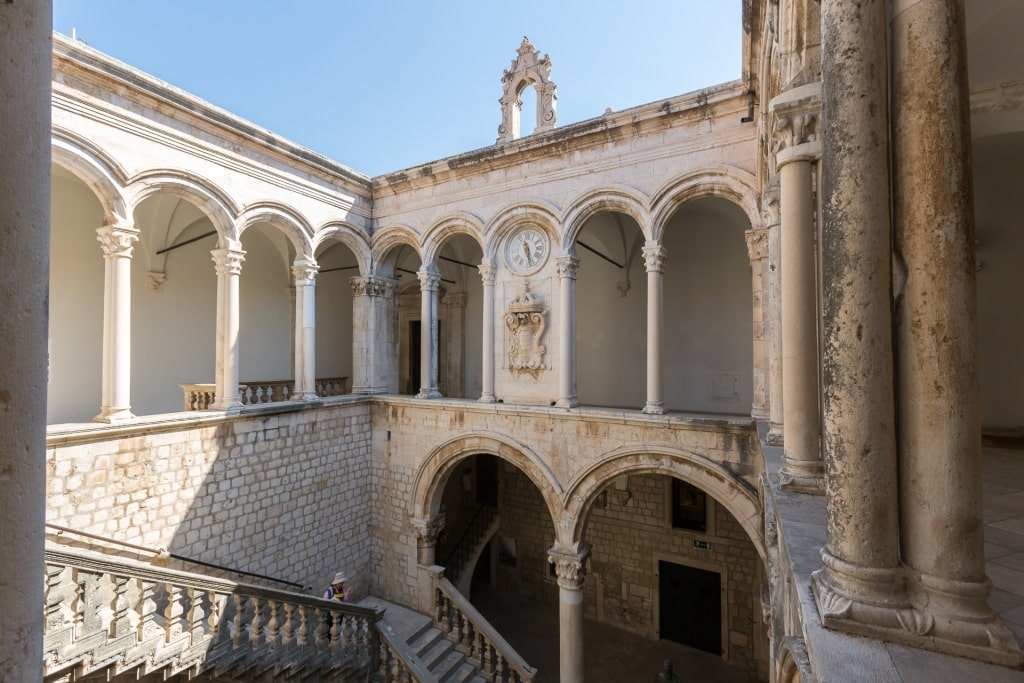
Rector’s Palace, Dubrovnik Old Town
Across the square is Rector’s Palace, one of the best places to visit in Croatia. It was built for the former governor—or rector—of Dubrovnik in the 1400s. Both palaces feature similar characteristics; an inner courtyard and exterior arched porches.
Split your time between soaking up the Old Town’s historic sights and shopping for Croatian gifts. The streets are lined with shops, cafes, wine bars, and trattorias, while a morning market takes place in the busy Gundulic Square each day.
Plitvice Lakes National Park
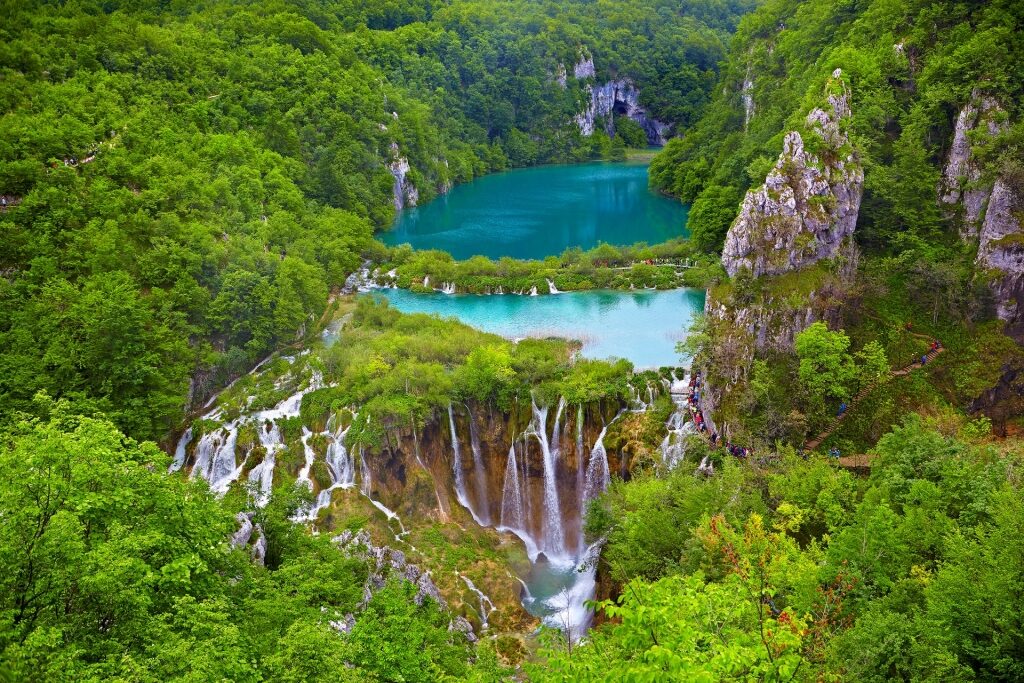
Plitvice Lakes National Park
This impressive-looking wild karst landscape, 90 minutes from Zadar, is the largest national park in Croatia, comprising meadows, woodlands, waterfalls, and Plitvice’s silky lakes.
Each lake, grouped into the Upper and Lower lakes, is connected by a series of dashing waterfalls, with wolves, bears, deer, and lynx among the park’s equally thrilling wildlife.
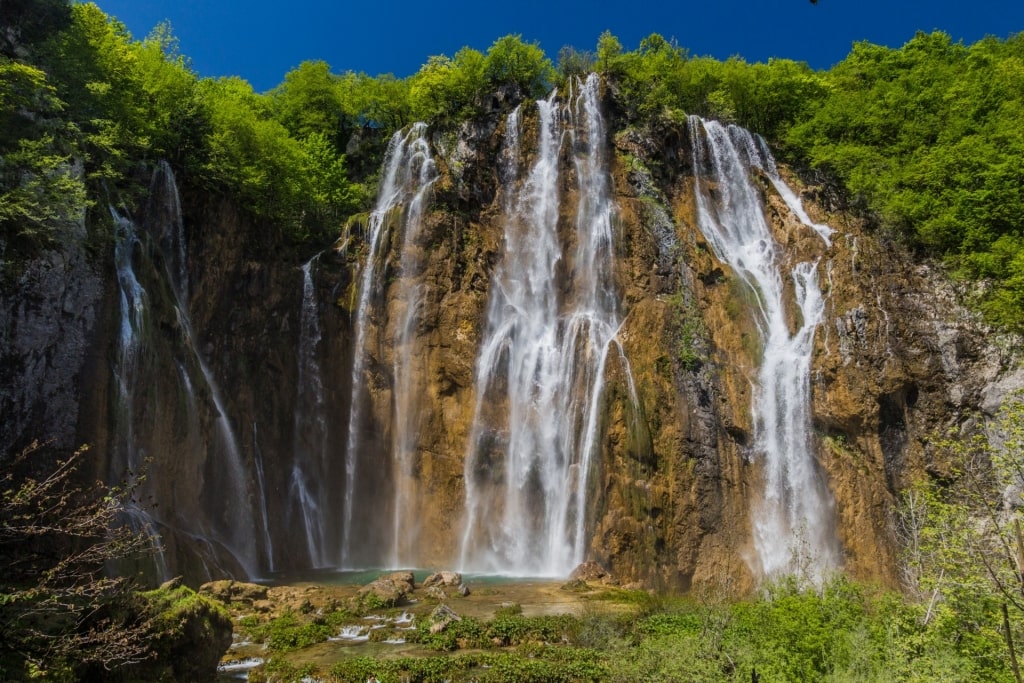
Veliki Slap, Plitvice Lakes National Park
There are two entrances to the lakes. The north entrance (Entrance 1), just above Veliki Slap, or Great Waterfall, and the south entrance (Entrance 2) on Lake Kozjak.
Opt for Entrance 2, where you can board an electric boat to glide across Lake Kozjak, the lowest and the last of the Upper Lakes. Pack your camera, because Kozjak is beautiful.
The deepest and largest of Plitvice’s lakes, Kozjak changes color from mineral-green around the shoreline to inky-blue in the center.
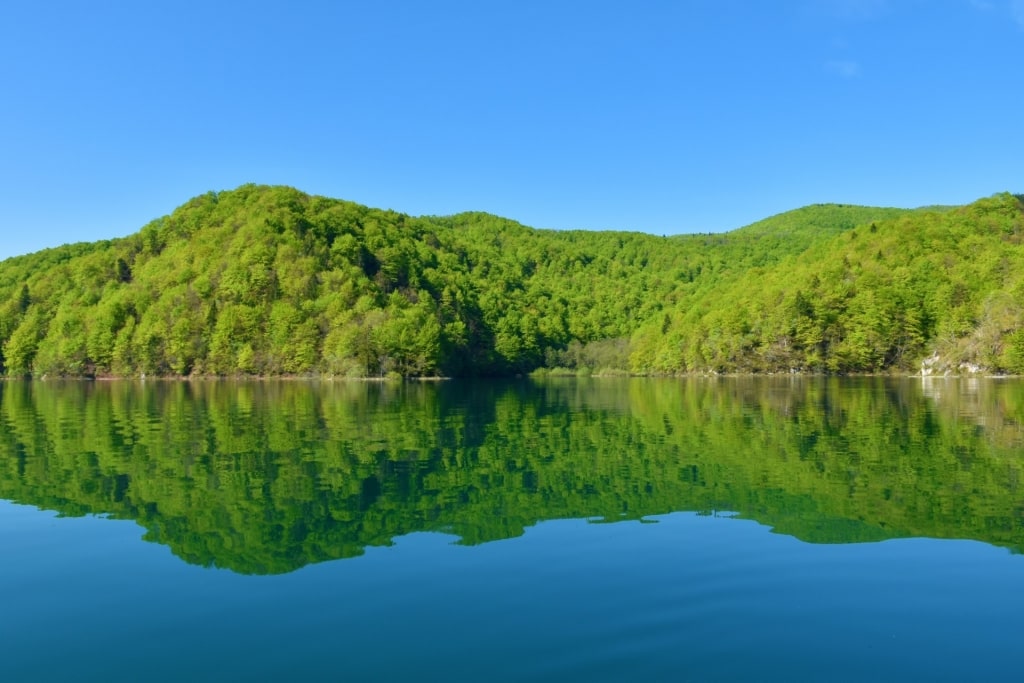
Lake Kozjak, Plitvice Lakes National Park
Visitors can soak up more of the scenery on a trolley-style train journey through the park, before covering some of the lakes on foot on the wooden walkways that cross the water or one of the designated hiking trails in the woodlands.
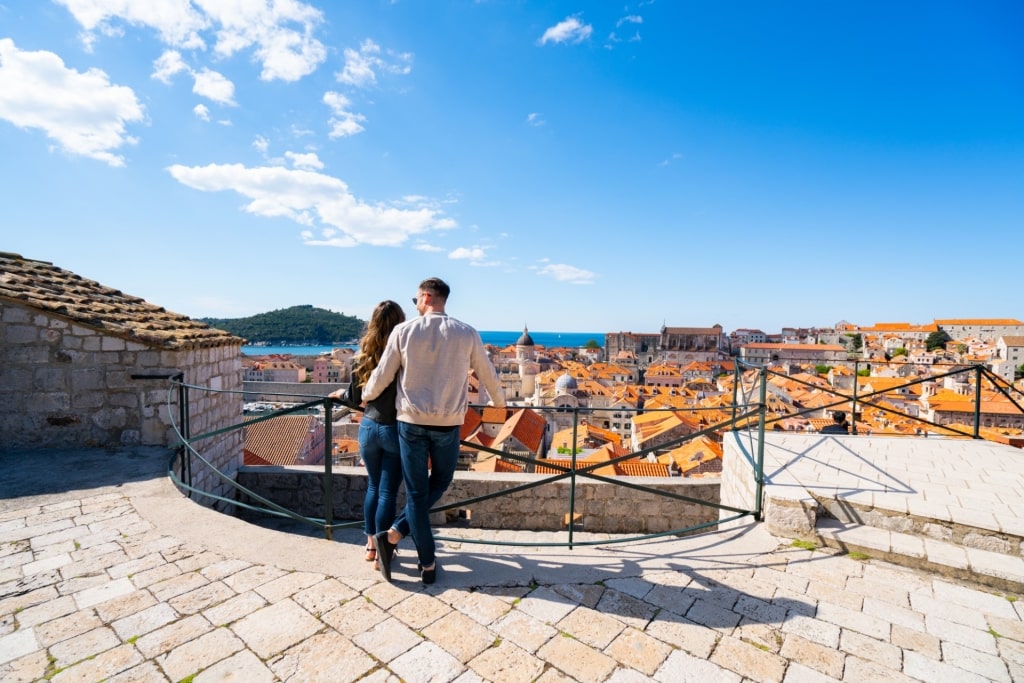
Dubrovnik
From exploring ancient old towns to discovering idyllic islands, discover everything Croatia is best known for on a cruise vacation. Browse our cruises to Croatia to experience an unforgettable getaway.
